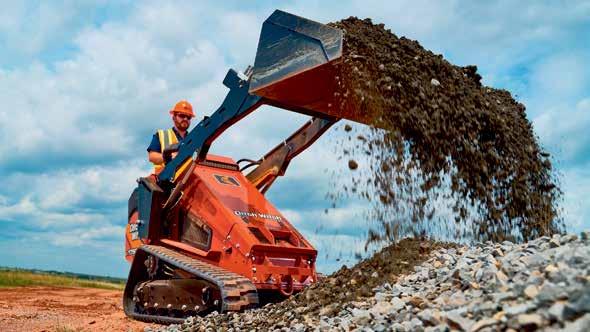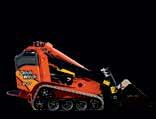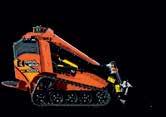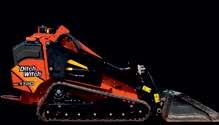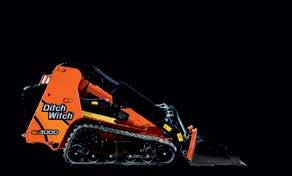TheConcernGrowing
A PUBLICATION OF THE OHIO LANDSCAPE ASSOCIATION



CAMERON MANERI
Cleary Brothers Landscaping




CAMERON MANERI
Cleary Brothers Landscaping
The landscape industry is intimately tied to the seasons, with each phase presenting unique challenges and opportunities. From the frenetic pace of spring and summer to the quieter, preparation-focused periods of fall and winter, managing seasonal transitions and avoiding burnout is crucial for professionals in this field. In this article, we delve into effective strategies for controlling and managing seasonal burnout while navigating the transitions inherent to the landscape industry.
Spring in the landscape industry is synonymous with renewal and growth. As nature awakens from its winter slumber, landscapers gear up for a surge in activity. The season heralds a flurry of projects ranging from garden renovations and planting new beds to revitalizing lawns and addressing winter damage. With longer daylight hours and warmer temperatures, crews are busy preparing outdoor spaces for the vibrant months ahead. The atmosphere is filled with optimism and energy as teams collaborate to transform landscapes into lush, blooming havens. Spring is not only a time of physical labor but also creativity, as landscapers design and execute plans that celebrate the beauty and potential of the natural world.
Summer is peak season in the industry, characterized by high demand and intense activity. With the sun shining brightly and gardens in full bloom, landscapers find themselves fully immersed in maintaining and enhancing outdoor spaces. The days are long and schedules are packed with tasks such as mowing lawns, trimming hedges, installing irrigation systems, and tending to seasonal flowers. The pace is fast and demanding, requiring meticulous attention to detail and endurance under the sun’s heat. Despite these challenges, there’s a sense of satisfaction in seeing landscapes thrive and clients delighted with the results. Summer in the landscape industry is a testament to dedication, craftsmanship, and the transformative power of skilled hands shaping the natural environment into breathtaking displays of color and vitality.
Fall in the landscape industry marks a transition from the vibrant hustle of summer to a period of preparation and reflection. As temperatures cool and daylight hours shorten, the focus shifts to tasks like leaf removal, seasonal plantings, and preparing landscapes for the coming winter months. It’s a time of assessing the year’s successes and challenges, conducting endof-season maintenance on equipment, and planning for next year’s projects. The atmosphere is one of anticipation mixed
continued on page 6

COVER: 2023 Landscape Ohio! Awards entry in the Residential Installation Category from Exscape Designs.
OHIO’S PROFESSIONAL GREEN INDUSTRY ASSOCIATION
OHIO LANDSCAPE ASSOCIATION
9240 Broadview Road
Broadview Heights, Ohio 44147
Phone: 440.717.0002
Toll Free: 1.800.335.6521
Web: www.ohiolandscapers.org and www.myohiolandscape.com
DESIGNER / EDITOR
Rick Doll
REGULAR WRITERS
Michael J. Donnellan, M3 Wealth Management
Dr. Jim Funai, PhD., Cuyahoga Community College
Shelley Funai, Stan Hywet Hall and Gardens
Cameron Maneri, Cleary Brothers Landscaping
Sandy Munley, Ohio Landscape Association
Bobbie Schwartz, FAPLD, Bobbie’s Green Thumb
ADVERTISING INFORMATION
Submission deadline: 10th of the month, prior to the month of magazine publication. For advertising rates and ad specs, please call 440.717.0002, or email Rick Doll Jr. at rick@ohiolandscapers.org.
DISCLAIMER
PERENNIAL FOCUS
Guara Lindheimeri
FISCAL FITNESS
Understanding IRAs
FOR SAFETY SAKE
OSHA Proposes First Federal Workplace Heat Standard
SCHOLARSHIP GOLF CLASSIC
Results & More
PLANT OF THE MONTH
Acer campestre: Hedge Maple
FEATURE ARTICLE
4 Strategies to Improve Your Bottom Line
FEATURE ARTICLE
The Beneficial Impact of Urban Landscaping
DIRECTIONS
WELCOME NEW MEMBERS
ADVERTISING
The Ohio Landscape Association, its board of directors, staff and the editor of The Growing Concern neither endorse any product(s) or attests to the validity of any statements made about products mentioned in this, past or subsequent issues of this publication. Similarly, the opinions expressed in The Growing Concern are those of the authors and do not necessarily represent the views of the Ohio Landscape Association.
OFFICERS
President
Cameron Maneri
President – Elect
Ryan Drake
Treasurer
Brandon Barker
Immediate Past President
Stephanie Gray, LIC
DIRECTORS
Amy Gatoo
Philip Germann
Matt Malone
Tim McCaskey
Bob Ramser, LIC
Tom Rieder, LIC
OLA STAFF
Executive Director
Sandy Munley
Associate Director
Rick Doll
Membership Coordinator
Melissa Roberts

UPCOMING OLA MEETINGS, EDUCATION SEMINARS & EVENTS
AUGUST 1, 2024
OLA SCHOLARSHIP GOLF CLASSIC
Join us at Mallard Creek Golf Club for the OLA’s 24th Annual Scholarship Golf Classic! Our golf outing was created to help generate funding for our scholarship program, targeting students interested in the green profession.
AUGUST 21, 2024
SNOW & ICE MANAGEMENT CLINIC
Whether you’re an owner, operations manager, dispatcher, or anyone in between, the OLA’s annual Snow & Ice Management Clinic is a can’t miss event for any company focused on improving how they handle the “white side” of their business.
SEPTEMBER 10, 2024
PLANT HEALTHCARE DAY
This full-day workshop combines all aspects of Plant Health Care (PHC) for both technicians and managers, with live demonstrations of PHC techniques. Held at Secrest Arboretum, located in Wooster, OH. See page 7.
SEPTEMBER 19, 2024
NE OHIO FACILITY TOUR (Green Impressions Landscaping, LLC)
Green Impressions first emerged from a passion for residential landscaping and a mission to provide clients with firstclass design, installation and grounds management. It is this mission, along with creativity and a trusted reputation, that has enabled them to build thriving landscapes and lasting relationships with their clients. Join us September 19th as we tour their facility located in Sheffield, OH. See page 36.
cont...
SEPTEMBER 26, 2024
WOMEN IN LANDSCAPE MEET-UP
Our Women in Landscape Group was created for the purposes of connecting, empowering, and advocating for women in the industry, while amplifying the voices of our current & future leaders. Held at Brew Wall, located in Broadview Heights, OH. See advertisement (right).
OCTOBER 9, 2024
CENTRAL OHIO OPEN HOUSE (GreenLawn Specialists)
Kyle, Philip, Scott, and Chris Germann (yes, all brothers) have been maintaining landscapes since the late ’90s. Their hands-on approach and continuing education give them the ability to keep clients’ properties functional and beautiful, handling all aspects of maintenance including mowing, lawn applications, irrigation systems, backflow testing and more. This event will include a brief tour of their facility followed by an hour-long networking opportunity. See page 37.
NOVEMBER 20, 2024
OLA ANNUAL MEETING
(Business Succession & Transition Planning Panel)
Stepping away from a business you’ve built isn’t a matter of if, but when. Join various industry experts as we discuss the topic of Succession and Transition Planning in addition to the OLA’s Annual Meeting. Held at St. Michael’s Woodside Event Center. Registration opens September 2024.



The OLA’s Women in Landscape Group was created for the purpose of connecting, empowering, and advocating for women in the landscape industry. We want to help drive the change necessary to recruit and retain female professionals while amplifying the voices of current & future women leaders. If you are female, you are invited to join this FREE networking group. (Note: Based on group consensus, males may be invited to join from time to time.)
Our next meeting is scheduled for September 26th, 2024 and will be a very informal event.
EVENT INFORMATION
DATE & LOCATION
SEPTEMBER 26, 2024
BREW WALL 1350 W ROYALTON RD, BROADVIEW HEIGHTS, OH 44147
AGENDA NETWORKING
3:00PM TO 5:00PM
COST TO ATTEND NONE
FOOD/BEVERAGE: ATTENDEES ARE RESPONSIBLE FOR YOUR OWN FOOD & BEVERAGE PURCHASES.
REGISTER TO ATTEND BY SEPTEMBER 19, 2024
ABOUT BREW WALL
BrewWall is proud to offer rotating craft beers, wines and sours on tap. Their craft beer colour spectrum is pale, gold, amber, copper brown and black. All wines are served at proper temperatures and you will never have to deal with an over oxidized wine at the BrewWall. If beer or wine is not your thing, no problem. They have a wide selection of food and spirits available.
continued from page 3
with a sense of closure, as landscapers work diligently to ensure that outdoor spaces are tidy and well-prepared for the seasonal changes ahead. Fall also offers opportunities for creativity, with projects like autumnal displays and decorative installations adding a touch of seasonal charm to residential and commercial landscapes alike.
Winter in the landscaping industry is a time of adaptation and preparation. As outdoor activities slow down due to cold temperatures and inclement weather, landscapers shift their focus to essential tasks such as equipment maintenance, inventory management, and strategic planning for the upcoming year. This period offers a valuable opportunity for professional development through training sessions and certifications, as well as for reviewing and refining business strategies. Additionally, some landscapers diversify their services by offering snow removal, holiday lighting installation, or indoor plant care, leveraging their expertise to meet seasonal demands and maintain revenue streams during the quieter months. Despite the reduced outdoor workload, winter remains a productive and pivotal season for landscapers as they lay the groundwork for future success and ensure their operations are well-prepared to thrive when spring returns.





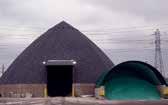
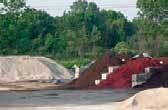
Seasonal burnout can manifest differently depending on the time of year and workload intensity. Common signs include:
• Physical Exhaustion: Feeling fatigued despite adequate rest.
• Mental and Emotional Drain: Loss of motivation, increased irritability, or difficulty concentrating.
• Decreased Job Satisfaction: Reduced enthusiasm for once enjoyable tasks.
Prioritize Self-Care
• Rest and Recovery: Ensure adequate sleep and take breaks during workdays to prevent exhaustion.
• Healthy Lifestyle: Maintain balanced nutrition and hydration, which are essential for sustaining energy levels.
• Physical Activity: Incorporate exercise and stretching routines to alleviate strain and improve mental well-being.
• Plan Ahead: Anticipate peak periods and adjust schedules to distribute workload more evenly throughout the season. continued on page 8

Sponsored by


EVENT INFORMATION
DATE & LOCATION
SEPTEMBER 10, 2024
SECREST ARBORETUM
WELCOME & EDUCATION CTR. 2122 WILLIAMS RD., WOOSTER, OH 44691
AGENDA
ARBORETUM TOUR (OPTIONAL)
8:00AM - 9:00AM
9:00AM - 9:30AM
9:30AM



Plant Healthcare (PHC) services are a great way to enhance your landscape business by providing higher quality service to clients, opening additional revenue streams and giving your company an advantage over the competition. Designed for both business owners and employees, this clinic will focus on live demonstrations of proper planting techniques and how to determine what to do when elements - such as pests and diseases - take their toll on your plant material. Attendees will have access to a wide range of plant material including trees, shrubs and perennials.
Pre-Conference tour of Secrest Arboretum
Lead by Arboretum Curator, Jason Veil
Classroom Learning Sessions focused on Understanding Phenology aka Growing Degree Days (Chris Riley, Ph.D.)


• Growing degree days (GDD) measure heat accumulation over the growing season and are an important indicator of plant and pest development. Dr. Chris Riley, Ph.D. of Bartlett Tree Experts will provide a simplified look at how this can be a useful tool to help you predict when to look for and/or treat specific diseases/pests.
Outdoor Learning Sessions
• Root Collar Health & Air Spading
• Proper Tree Planting
• Pest vs. Disease Identification
• Environmental Factors That Affect Plant Health
continued from page 6

• Delegate Tasks: Empower team members by assigning responsibilities according to their strengths and capabilities.
• Set Realistic Goals: Break down projects into manageable tasks with clear deadlines to reduce stress and enhance productivity.
• Off-Season Services: Explore opportunities for winter services such as snow removal, holiday lighting installation, or indoor landscaping projects.
• Maintenance Contracts: Secure long-term maintenance contracts with clients to ensure steady revenue during slower months.
• Continuous Learning: Attend workshops, seminars, or online courses to enhance skills and stay updated with industry trends.
• Networking: Build relationships with peers and industry professionals to exchange ideas, gain insights, and support each other during seasonal transitions.
Transitioning between seasons requires proactive planning and adaptation:
• Equipment Maintenance: Prepare equipment for seasonal changes, ensuring it is serviced and stored properly to prolong its lifespan and efficiency.
• Financial Planning: Review budgets and cash flow projections to manage expenses and revenue fluctuations associated with seasonal variations.
• Client Communication: Maintain open lines of communication with clients to manage expectations regarding project timelines and seasonal services.
During quieter periods, capitalize on the opportunity to:
• Reflect and Evaluate: Review the previous season’s performance, identify areas for improvement, and develop strategies for the upcoming season.
• Marketing and Outreach: Launch targeted marketing campaigns to promote seasonal services or special offers, attracting new clients and retaining existing ones.
• Team Building: Invest in team development activities such as training sessions, team-building exercises, or employee appreciation events to foster camaraderie and morale.
In the landscape industry, managing seasonal transitions and preventing burnout are essential for sustaining productivity, profitability, and overall well-being. By prioritizing selfcare, implementing effective workload management strategies, diversifying services, and investing in professional development, landscapers can navigate seasonal challenges with resilience and success.
As seasons change, so do the demands and rhythms of the landscape industry. By adopting proactive approaches and fostering a culture of adaptation and growth, landscapers can not only survive but thrive year-round, delivering exceptional service and creating beautiful outdoor spaces that enhance the lives of clients and communities alike.
Ultimately, managing seasonal burnout and transition in the landscape industry requires a combination of foresight, flexibility, and a commitment to continuous improvement. By embracing these principles, landscapers can navigate the ebb and flow of the seasons while achieving sustainable success in a competitive and evolving market.










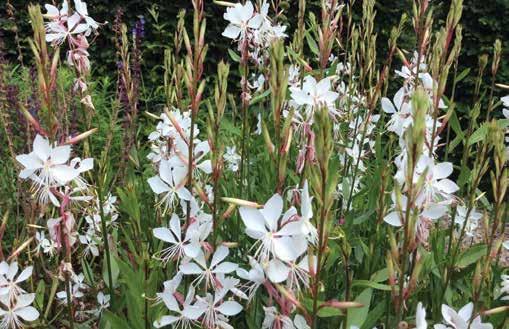

Required: A perennial that blooms for five months, does not need deadheading and tolerates drought. The answer is Gaura lindheimeri. Although native to Louisiana and Texas, it is hardy to zones 5-8. As one might expect from its native habitat, Gaura is also tolerant of heat and humidity. Although it prefers rich, well-drained soil in full sun to partial shade, I find it to be a very adaptable plant.
In bloom, Gaura reminds me of a swarm of small white, blushed pink butterflies that stand out against the two to three foot reddish stems that are somewhat lax and sway in the wind. The lanceolate foliage is speckled with small red dots. Gaura flowers prolifically from June until frost without deadheading but deadheading will give it a neater and shorter appearance.
The species is a copious self-seeder but the seedlings are very easy to pull if not desired. The cultivar ‘Whirling Butterflies’ is sterile so if seeding is a problem, using this cultivar is the answer. In all other respects, it is the same as the species.
Another tall cultivar is ‘Siskiyou Pink’. It has rosy-pink flowers and was selected at Siskiyou Rare Plant Nursery in the state of Washington.
There are also some shorter ones. ‘Blushing Butterflies’ has soft blush-pink flowers on 24 inch stems that are more upright than the species. ‘Crimson Butterflies’ has hot pink flowers on short (18 inches) red stems with dark red leaves. ‘Sunny Butterflies’ has medium pink flowers on 24 inch stems with gray-green leaves that sport a white edge. ‘Rosy Jane’,
continued on page 12
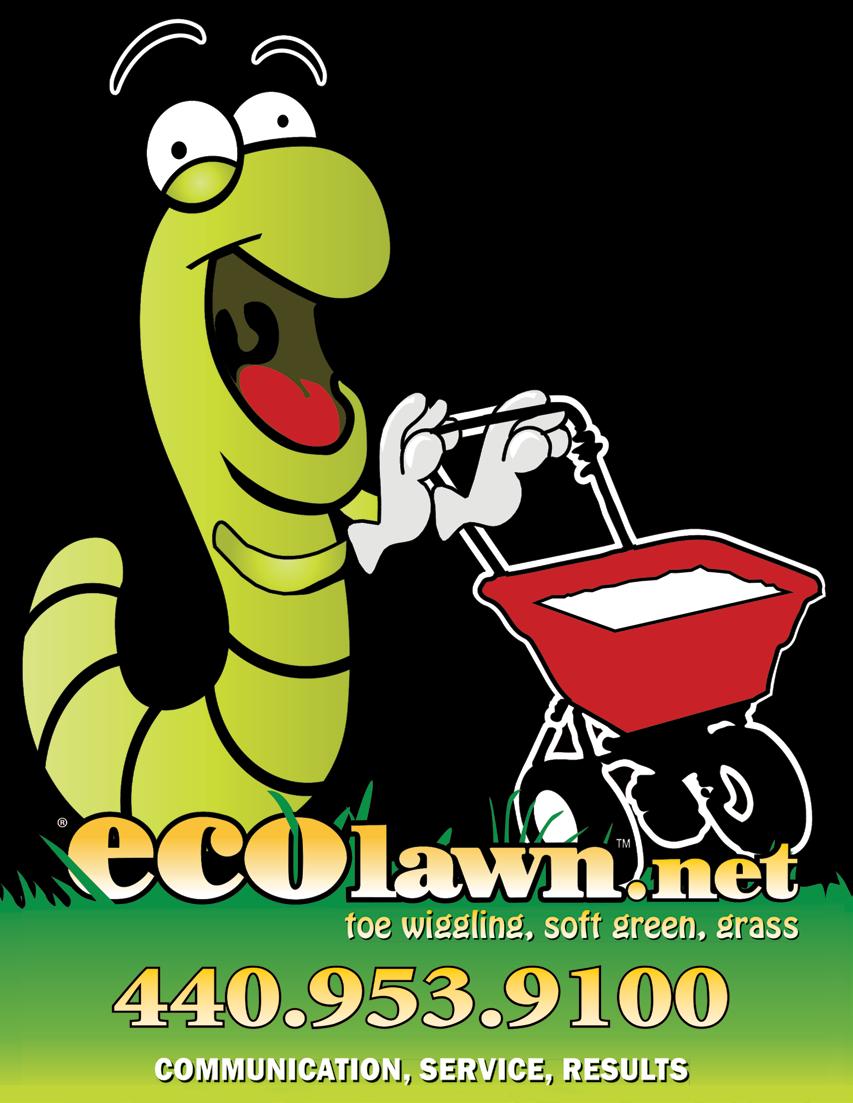




We’ll help make your properties outstanding.
Organics are included for dense lawns without excess growth.
Weeds carefully spot treated.
Direct client billing makes it simple for you.
Landscape referrals to you.

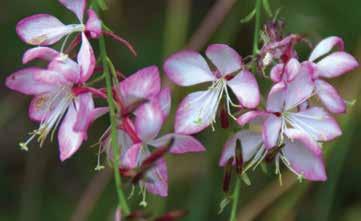
continued from page 10
also 24 inches tall, has four white petals with pink lining the edges. ‘So White’ is only 18 inches tall and has pure white flowers (not the slightest hint of pink) and foliage without any spotting. ‘Gaudi Red’, only 12 inches tall, has deep rose flowers that open from red buds and burgundy foliage tips.
Gaura can be used in the front or middle of the perennial border depending on the cultivar. It combines well with many types of flowers and ornamental grasses and in both formal and informal settings.
Happily, Gaura is both drought tolerant and deer resistant.
With so many choices available now, there has to be a that is right for you.
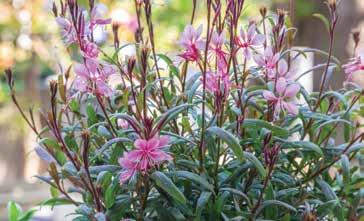
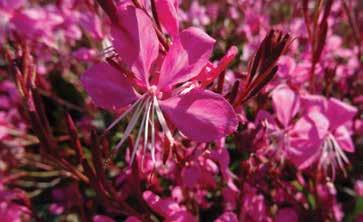


Bobbie Schwartz, FAPLD, owner of Bobbie’s Green Thumb in Shaker Hts., Ohio, is a landscape designer, consultant, freelance writer, and lecturer whose specialties are perennial gardens and four season landscapes. In addition to being an Ohio Landscape Association (OLA) member, she is an active member of the Ohio Nursery and Landscape Association (ONLA) and Perennial Plant Association (PPA). Bobbie is a Past President of the Association of Professional Landscape Designers (APLD).











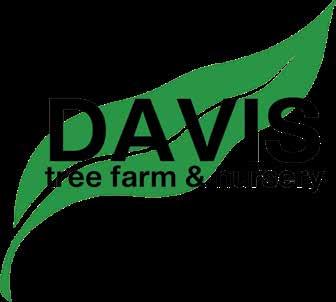

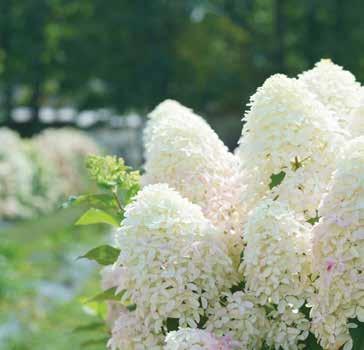


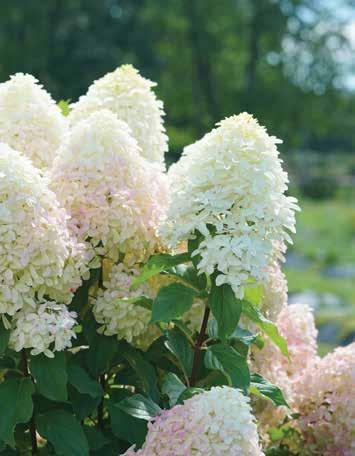


MICHAEL J. DONNELLAN M3 Wealth Management
An Individual Retirement Account (IRA) is a personal savings plan that offers specific tax benefits. IRAs are one of the most powerful retirement savings tools available to you. Even if you’re contributing to a 401(k) or other plan at work, you might also consider investing in an IRA.
The two major types of IRAs are traditional IRAs and Roth IRAs. Both allow you to contribute as much as $7,000 in 2024. You must have at least as much taxable compensation as the amount of your IRA contribution. But if you are married filing jointly, your spouse can also contribute to an IRA, even if he or she has little or no taxable compensation, as long as your combined compensation is at least equal to your total contributions. The law also allows taxpayers age 50 and older to make an additional $1000 “catch-up” contribution, for a total up to $8,000 in 2024.
Both traditional and Roth IRAs feature tax-sheltered growth of earnings. And both give you a wide range of investment choices. However, there are important differences between these two types of IRAs. You should understand these differences before you can choose the type of IRA that’s best for you.
Practically anyone can open and contribute to a traditional
IRA. You can contribute the maximum allowed each year as long as your taxable compensation for the year is at least that amount. If your taxable compensation for the year is below the maximum contribution allowed, you can contribute only up to the amount that you earned.
Your contributions to a traditional IRA may be tax deductible on your federal income tax return. This is important because tax-deductible (pre-tax) contributions lower your taxable income for the year, saving you money in taxes.
What happens when you start taking money from your traditional IRA, usually in retirement? Any portion of a distribution that represents deductible contributions is subject to income tax because those contributions were not taxed when you made them. Any portion that represents investment earnings is also subject to income tax because those earnings were not previously taxed either. Only the portion that represents nondeductible, after-tax contributions (if any) is not subject to income tax. In addition to income tax,
continued on page 16
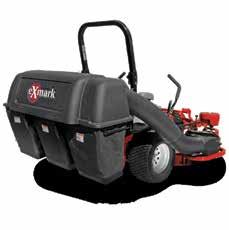




continued from page 14
you may have to pay a 10% early withdrawal penalty if you’re under age 59½, unless you meet one of the exceptions.
If you wish to defer taxes, you can leave your funds in the traditional IRA, but only until age 73. That’s when you have to take your first Required Minimum Distribution (RMD) from the IRA. After that, you must take an RMD by the end of every calendar year until you die or your funds are exhausted. The annual distribution amounts are based on a standard life expectancy table. You can always withdraw more than you are required to in any year.
Not everyone can set up a Roth IRA. Even if you can, you may not qualify to take full advantage of it. The first requirement is that you must have taxable compensation. If your taxable compensation in 2024 is at least $7,000, you may be able to contribute the full amount. But your ability to contribute depends on your MAGI and your income tax filing status.
Contributions to a Roth IRA are not tax deductible, as contributions are after-tax dollars. The good news is that if you meet certain conditions, your withdrawals from a Roth IRA will be completely income tax free, including both contributions and investment earnings. To be eligible for these qualifying distributions, you must meet a fiveyear holding period requirement. In addition, one of the following must apply:
• You have reached age 59½ by the time of the withdrawal
• The withdrawal is made because of disability
• The withdrawal is made to pay first-time home-buyer expenses ($10,000 lifetime limit)
• The withdrawal is made by your beneficiary or estate after your death
Qualified distributions will also avoid the 10% early withdrawal penalty. This ability to withdraw your funds with no taxes or penalties is a key strength of the Roth IRA.
Another advantage of the Roth IRA is that there are no Required Minimum Distributions (RMDs). You can put off taking distributions until you really need the income. Or you can leave the entire balance to your beneficiary without ever taking a single distribution.
Assuming you qualify to use both, which type of IRA is best for you? Sometimes the choice is easy. The Roth IRA will probably be a more effective tool if you don’t qualify for tax-deductible contributions to a traditional IRA. However, if you can deduct your traditional IRA contributions, the choice is more difficult. The Roth IRA may very well make more sense if you want to minimize taxes during retirement and preserve assets for your beneficiaries. But a traditional deductible IRA may be a better tool if you want to lower your yearly tax bill while you’re still working (and probably in a higher tax bracket than you’ll be in after you retire).
Note: You can have both a traditional IRA and a Roth IRA, but your total annual contribution to all of the IRAs that you own cannot be more than $7,000 for 2024 ($8,000 if you’re age 50 or older).
You can move funds from an IRA to the same type of IRA with a different institution. No taxes or penalty will be imposed if you arrange for the old IRA trustee to transfer your funds directly to the new IRA trustee.
You may also be able to convert funds from a traditional IRA to a Roth IRA. This decision is complicated, however, so be sure to consult your tax and financial professional for information specific to your individual situation.
Scenarios illustrated are hypothetical in nature, results may vary. Investing is subject to risk which may involve loss of principal. Past performance is not indicative of future results.
The M3 Wealth Management Office does not provide legal or tax advice. Consult an attorney or tax professional regarding your specific situation. The information herein is general and educational in nature and should not be considered legal or tax advice.
Michael J. Donnellan specializes in stock selection and retirement planning. Feel free to contact him with any questions or comments at the M3 Wealth Management office at 17601 W. 130th Street – Suite 1 in North Royalton, Ohio. Phone number (440) 652-6370 / Email: donnellan@m3wealthmanagement.com
Securities and advisory services offered through L.M. Kohn & Company
Registered Broker/Dealer Member FINRA/SIPC/MSRB
10151 Carver Rd. Suite 100 – Cincinnati, Ohio 45242 (800) 478-0788

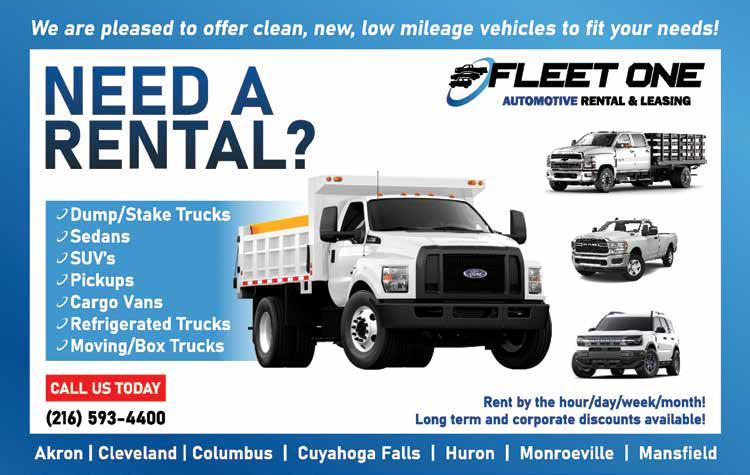
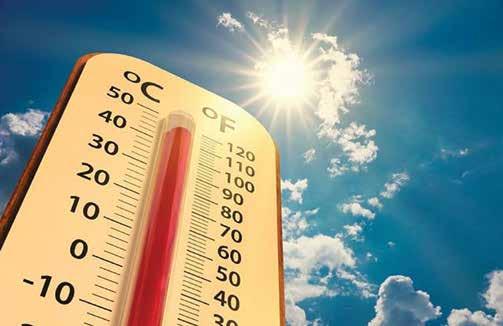

In a ground-breaking move, federal workplace safety officials announced in July the first-ever national heat stress rule aimed at protecting workers from heat-related illnesses and fatalities. The proposed regulations from OSHA could soon require you to implement robust measures to safeguard your employees from extreme heat both indoors and outdoors – and significantly impact your workplace safety protocols. The proposal still needs to wind its way through a months-long administrative process, so you’ll want to follow the process closely.
OSHA’s initiative, years in the making, follows an increase in heat-related workplace incidents and is part of its broader effort to address the impacts of climate change on occupational health. Currently, the agency relies on its broad General Duty Clause to enforce heat safety in the workplace, which requires employers to furnish a workplace free from recognized hazards which may cause or are likely to cause death or serious physical harm. The agency has made clear it believes this broad standard is insufficient given the growing
number of heat-related worker injuries and fatalities. OSHA noted that “heat is the leading cause of weather-related deaths in the United States.” The new rule aims to build on existing state-level heat standards, such as those in California and several other states.
The proposed standard would apply to all employers conducting outdoor and indoor work in all general industry, construction, maritime, and agricultural sectors where OSHA has jurisdiction.
Notably, the proposed rule excludes short-duration employee exposure to heat. Additionally, you will not need to apply these new rules to “sedentary” employees, those in indoor job sites kept below 80 degrees, and remote workers. The same holds true for emergency response workers who are exempted under the rules. Finally, OSHA regulations don’t cover public employees, so the new rules will not apply to government employers.
continued on page 20

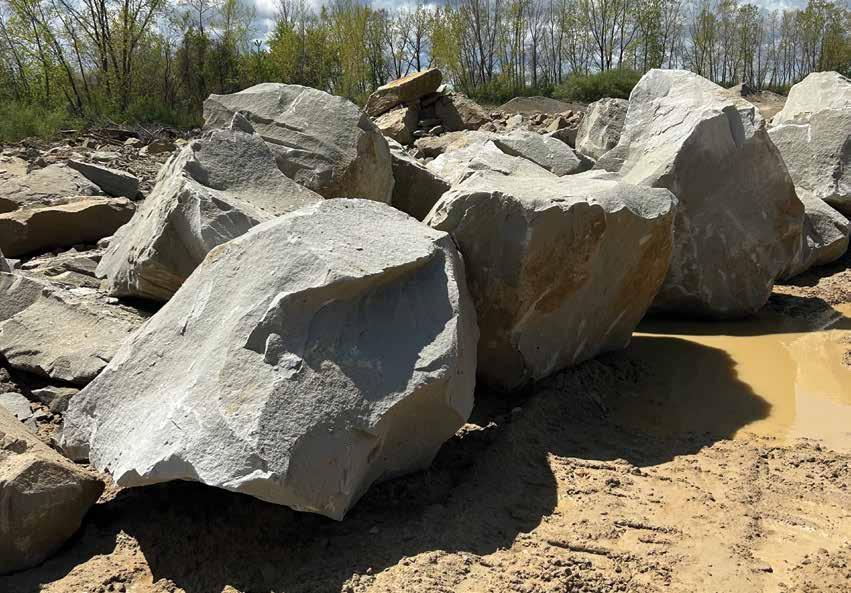
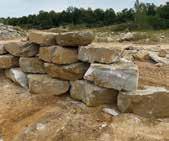



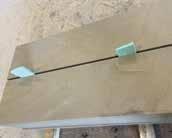

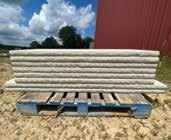


continued from page 18
The proposed OSHA heat safety rule introduces several key requirements aimed at protecting workers from the hazards of excessive heat, including requiring employers to designate a heat safety coordinator and identify heat hazards in both outdoor and indoor worksites. These regulations are designed to address both immediate and long-term risks associated with heat exposure. Below is a detailed breakdown of the most significant new requirements:
Employers will be required to:
• Conduct Regular Heat Risk Assessments: You’ll have to evaluate the potential for heat exposure in various job roles and settings. This involves identifying high-risk areas and tasks, especially during peak heat periods.
• Monitor Workplace Temperatures: You must implement systems that will continuously monitor temperature and humidity levels, particularly during heat waves or periods of extreme heat.
The rule will mandate several preventive strategies to mitigate heat-related risks:
• Hydration: You’ll need to provide workers with accessible drinking water at all times. You will need to ensure that your employees have frequent access to water and encourage regular hydration.
• Rest Breaks: The rule will require you to implement scheduled rest breaks in cool or shaded areas to allow workers to recover from heat exposure. The frequency and duration of these breaks will need to increase with rising temperatures.
• Shade and Cooling Areas: You’ll need to ensure that shaded or air-conditioned rest areas are available for workers to use during breaks. These areas should be sufficiently close to the worksite to allow for quick access.
The proposed rule puts a requirement on employers to:
• Provide Heat Safety Training: You will need to educate employees and supervisors about the dangers of heatrelated illnesses, the symptoms, and the importance of preventive measures. It should include recognizing early signs of heat stress and appropriate first-aid responses.
You’ll need to provide annual refresher training for supervisors, heat safety coordinators, and employees, as well as supplemental training after changes in exposure to heat hazards, company policies and procedures, or the occurrence of the heat injury or illness.
• Offering Acclimatization Programs: You will also have to develop and implement acclimatization plans for new and returning workers. This involves gradually increasing workloads and exposure time to build up a worker’s tolerance to heat.
Some key requirements include:
• Heat Illness Prevention Plan: The proposed rule would require employers with more than 10 employees to develop and implement a written worksite Heat Injury and Illness Prevention Plan, including site-specific information to evaluate and control heat hazards in your workplace (employees with 10 or fewer employees will still need a plan, but it can be communicated verbally). You will have to make the plan available to each employee performing work at the site and in a language that each employee, supervisor, and heat safety coordinator understands. You’ll be required to evaluate the effectiveness of the plan whenever a heat-related illness or injury occurs that results in death, days away from work, medical treatment beyond first aid, or loss of consciousness, but at least annually. In developing and updating the HIIPP, you’ll also be required to seek input from nonmanagerial employees and their representatives.
• Emergency Medical Response: You have to develop a Heat Emergency Response Plan and ensure that supervisors and workers are trained to respond effectively to heat-related emergencies, including providing first aid and contacting emergency services.
Employers will need to:
• Maintain Indoor Monitoring Data: You’ll be required to maintain written or electronic records of indoor monitoring data for a minimum six months.
• Create Incident Reporting Processes: You will have to maintain detailed records of heat-related incidents, including illnesses and near-misses. This data should be used to review and improve heat safety practices.
continued on page 22
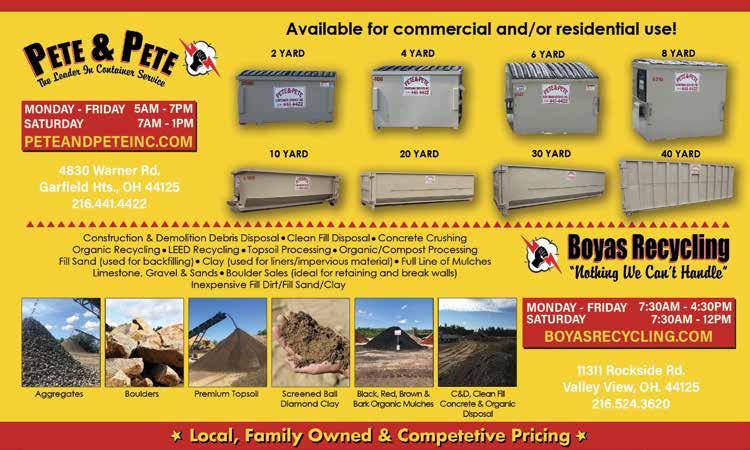

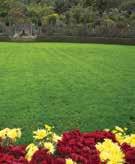




continued from page 20
• Conduct Regular Audits: You need to deploy regular audits of heat safety measures and your overall compliance with the new standards. These audits will help identify areas for improvement and ensure ongoing adherence to the regulations.
Specific industries, such as agriculture and construction, face higher risks of heat exposure and could see additional requirements under the new rule. They include:
• Enhanced Protections: For industries with heightened heat exposure risks, you may need to implement additional safeguards, such as more frequent rest breaks, specialized training, and more rigorous monitoring of environmental conditions.
• Special Considerations for Vulnerable Workers: You may also have to offer enhanced protections for vulnerable populations, including temporary, seasonal, and immigrant workers, ensuring they receive adequate training and resources to manage heat stress.
OSHA began the rulemaking process in October 2021, culminating in today’s unveiling. The proposed rule will soon be formally published in the Federal Register and members of the public will be permitted to submit comments for 120 days after the date of publication in the Federal Register. Agency officials will then review all of the comments and hold at least one public hearing to discuss the feedback. This process should take several months at least, so expect the next substantive news on this front by late 2024.
The agency will then take all of the comments into account and publish the rule in final form, perhaps with substantive revisions based on the feedback it receives. We expect that to happen in the first half of 2025.
This article appeared on Fisher Phillips’ website, in their Insights section, located at www.fisherphillips.com/en/news-insights. With more than 600 attorneys in 41 offices across the United States and Mexico, Fisher Phillips is an international labor and employment firm providing practical business solutions for employers’ workplace legal problems.











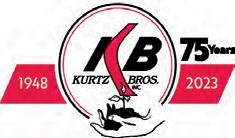
Dave Hauser
Mike Farmwald
Brian Kaver
Joe Zeola

Keith Broadsword
Matt Blynn
Chad Williams
Garrett Wirth
Services
Services Hauser Services
Services
Davis Tree Farm & Nursery
Blynnscapes
5 Star 5 Star
Bobby Zuercher
Brian Drogell
Kevin Diamond
Wes Moloney
Three-Z-Supply
Three-Z-Supply
Three-Z-Supply
Three-Z-Supply


DINNER SPONSOR

LUNCH SPONSOR

COMMEMORATIVE




A & A Hydraulic & Equipment
A & A Masonry
AGC
Arms Trucking
Best Truck Equipment Inc
Boulders Direct
Cardinal Building & Design Co.
Cleveland Magazine
J. Barker Landscaping
JFD Landscapes (2)
Kurtz Bros. (2)
M.H. Eby, Inc.
M.J. Design Associates, Inc.
Minute Men OhioComp
Monte Man Landscaping

Morel Landscaping
Morton’s Landscaping
NGLCO Field Day
Northern Territory Lighting
O’Reilly Equipment
Ohio CAT
Oliger Seed Company
On the Other Side
Ottawa Landscapes
PC Services, LLC
Rainbow Sprinkler Systems
Rock-n-Scapes LLC
Sajovie Brothers Landscaping, Inc.
Sandler Training
Schill Grounds Management
Emmett Equipment
Fat Heads Brewery
Grace Brothers Nursery & Supply
Hoppy Dude Brews
J. Barker Landscapinh
Kurtz Bros.
TROPHIES SPONSOR

CONTINENTAL BREAKFAST SPONSOR

HOLE-IN-ONE SPONSOR

LONG DRIVE CONTEST SPONSOR


ALL ROADS
Lago East Bank
Malley’s Chocolate
McCaskey Landscape & Design
Ohio Landcape Association
Ohio Pools & Spas
OLA Board of Directors
SiteOne Landscape Supply
Spena Landscape Contractors
The Belden Brick Company
The Huebler Family
Three Z
Tier One Precast Concrete
Turfscape
Valley Truck Centers - Automotive Group
Valley Truck Centers - Final Vehicle Solutions
Valley Truck Centers - Fleet One
Van Ness Stone, Inc.
Wolf Creek Company
Working With Nature
Yardmaster
Sandler Training
StanleyBlack& Decker
CLOSEST TO THE PIN SPONSOR BEVERAGE SPONSORS

TEAM PHOTOS

LONG PUTT CONTEST SPONSOR

DRIVING RANGE SPONSOR












Golfers TO ALL OF OUR



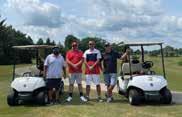


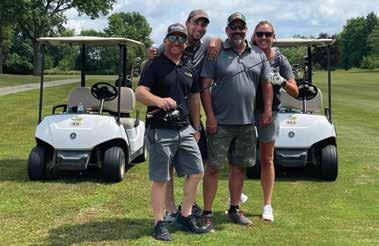



JOIN US FOR THE 54th ANNUAL FIELD DAY
September 12, 2024 at The Holden Arboretum 9550 Sperry Rd., Kirtland, OH 44094
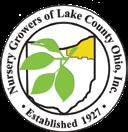
In addition to our tradeshow, we are focusing on promoting careers in the green and horticulture industry. We are inviting students from around the state of Ohio to be a part of this year’s trade show.
We had 200 students participate in the last 2 years.
Field Day brings together industry leaders, growers, suppliers, innovators, landscapers & educators.
Don’t miss the food trucks, fun, education, conversations with your colleagues & opportunities to promote our industry.
See you in the FIELD!
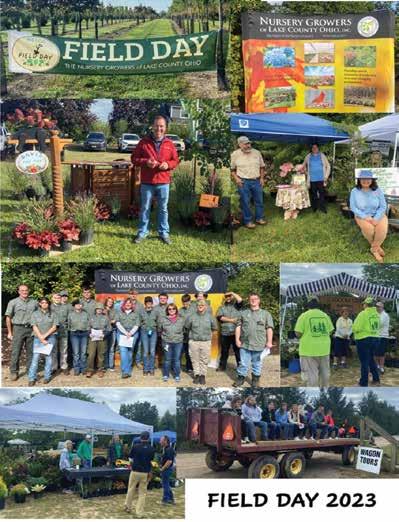

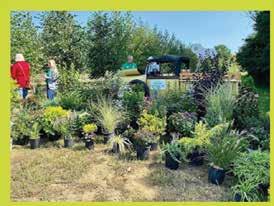
• Pre-registrations free, $5 Walk in fee 9am-4pm
• Over 100 Exhibitors celebrating the Green Industry in an outdoor festival/ tradeshow.

• Cutting edge plants from liners to specimen.
• OSU researchers & educators on hand & classes offered.

• Industry demos.

• Food Trucks (lunch is not included with price of admission).
RESERVE YOUR BOOTH SPACE BY September 7th www.nglco.com Or Contact NGLCO at info@nglco.com (440) 241-7969
SEE YOU THERE!
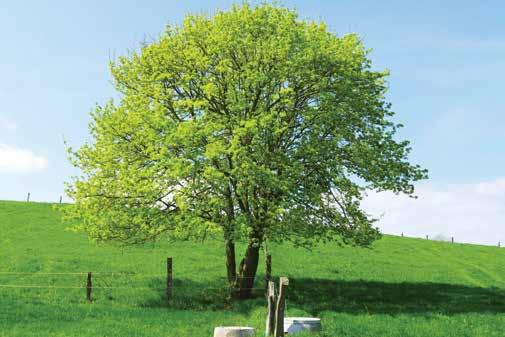

JIM FUNAI, PhD
Cuyahoga Community College
SHELLEY FUNAI, LIC
Stan Hywet Hall and Gardens
We recently spent time visiting Croatia and Slovenia while serving as judges for the European Tree Climbing Championship for the ISA. Of course, you know we visited as many botanical gardens as possible and even found a few garden centers to check out. Our most surprising plant find was a specimen planting of poison ivy (yes, complete with official ID label and all) in the University of Zagreb Botanical Garden. However, one of the most common plants we found across the countryside and cities alike was Acer campestre.
This Maple is very common across European gardens, city trees, and through all natural areas. The native range extends into Western Asia but with cultivation it has become established well beyond its pre-cultivation native range. You may find reports that this tree is invasive in the US, which may be true in some pockets. The reality is this maple is much like many other maples and sets a ton of viable seeds. We have Silver (A. saccharum) and Red (A. rubrum) Maples that reseed like crazy. Europe has Sycamore (A. pseudoplatanus) and Norway (A. platanoides) Maples that also reseed like crazy. When we plant their trees here, they reseed. When they plant our trees there, they reseed. The key to controlling invasive/aggressive reseeders is paying attention to where you are using them.
Depending on location, English common names are either Hedge Maple or Field Maple. In Croatia it is called makljen (the “j” is pronounced like a “y”… we’re pretty sure). The common names are reference to a common use and location for the plant. “Campestre” is a Latin derived word meaning “of the fields or open plains” where it will reseed and grow. It is nearly impossible to stroll an English or French style garden without seeing a tall hedge of these trees perfectly pruned into shape. We once found a beautiful 25-foot-tall hedge on each side of a path going a solid 100 feet long at Schönbrunn Palace in Vienna, perfectly maintained into a wall of green.
continued on page 30
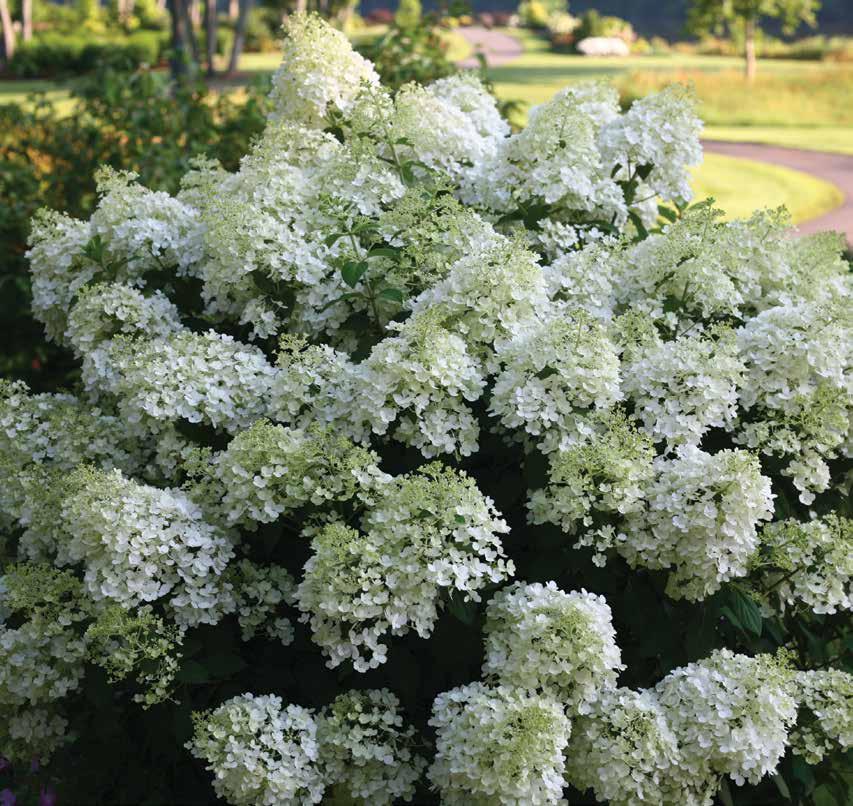

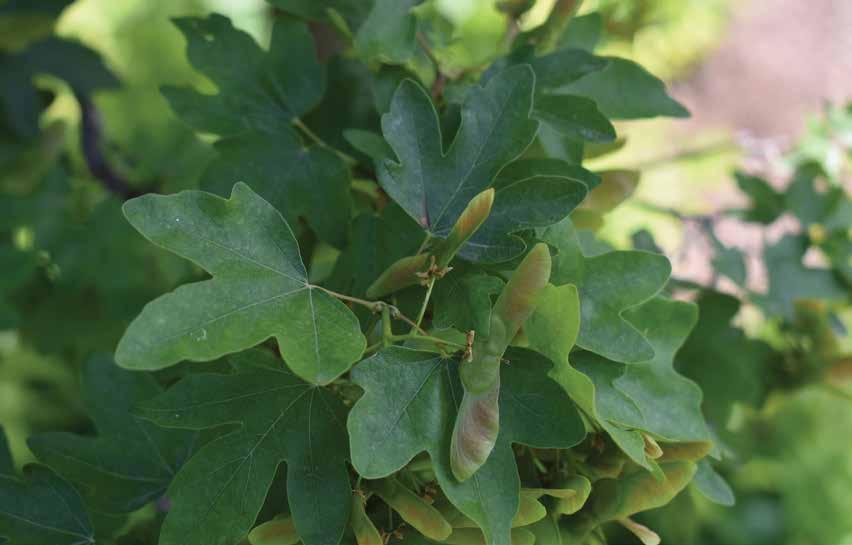
continued from page 28
So why do we think this tree could be of use to our readers? Simply because it is a smaller Maple that is incredibly reliable in the urban setting. Typically topping out in the 25-foot range, perhaps pushing into the low 30-foot range with time, this is a good under-the-wire tree. Even if the dreaded utility pruning crew comes by, they can buzz the top of the tree and it won’t skip a beat. Used as a street tree in the Devil Strip, this tree will behave well and form a very dense canopy helping screen views and cast shade.
Best in full sun, the tree will tolerate some shade and won’t make much fuss about soil conditions. We’ve seen this tree grow in nearly all soil types but would recommend not planting in overly wet soils. Clay and garbage urban soils are just fine for siting this tree.
In late April or early May small yellow-green flowers burst across the tree providing great opportunity for pollinators to visit. Like most Maples, the flowers shouldn’t be described as highly ornamental, but they are pretty when you look closely at them. Fall color will be a muted yellow – not the most noticeable fall tree, but fairly reliable.
Perhaps you have a tighter garden space to design that requires some effective screening. Hedge Maple can be a great option much like European Hornbeam. These trees can be planted very tight (basically root ball to root ball) and pruned hard into a tall hedge that remains super dense. Even in the winter when leaves have fallen, when hedged the branches are super dense and still provide a very effective screen. Klyn Nursery was producing these as multi-stem shrubs that can be trained into a lower hedge between driveways or properties; hopefully
Petitti Farms will continue this offering. Often in European gardens hedge maple is pleached which means it is limbed up to create a “hedge on stilts.” This creates a functional wall/ screen effect without being overbearing by allowing air and light to pass under the canopy of the hedge.
There are also some noteworthy cultivars to consider in the garden:
‘Carnival.’ We recently picked this one up and absolutely love it. This cultivar is variegated with pink/cream/green in new growth maturing to a strong white and light green as the season progresses. We put this tree as an understory tree below some giant shade trees and it just lights up the whole area around it. As is common on many variegated trees, ensure this isn’t hit with drought conditions and keep it out of blasting full sun. This is a great smaller accent for the garden, growing slower than the species and topping out in the 10-foot range.
‘Emerald Splendor’ grows to around 30 feet, tops, with a spread about 75% of height. Deep-green leaves give the name but super corky ridges on the stems give a unique look. While the straight species will get some corky ridges (think burning bush) this cultivar seems to be much better at creating this cool winter ornamental feature.
‘Hedge King’ is a perfect choice when using this tree as a hedge. The habit is tighter, more upright branching that lends itself to being pruned into a hedge. This can be found as a tree form for a pleached hedge or as a clump to make a hedge at ground level.
Jim Funai, PhD, is full-time faculty at Cuyahoga Community College, a NALP accredited associate of applied science in hoticulture degree program. He has a PhD in Landscape Engineering and Forestry and is a Licensed Arborist. Shelley Funai is Grounds Manager at Stan Hywett Hall and Gardens in Akron, Ohio, which offers a historic estate designed by Warren H. Manning and a beautiful manor house museum. She is Landscape Industry Certified in Ornamental Plant Care.
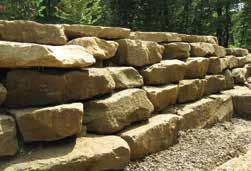
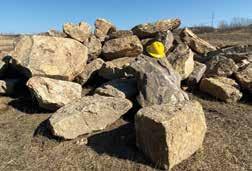
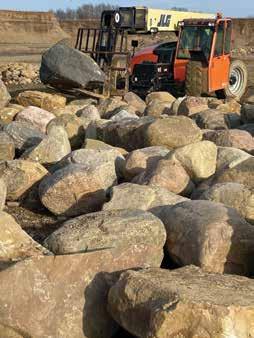

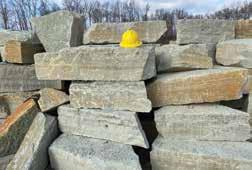
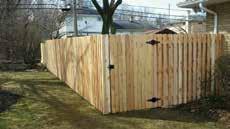
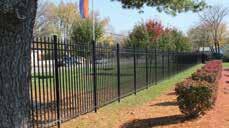
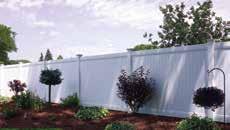


When you aren’t seeing a profitable bottom line in your lawn and landscape business, your first thought might be time to raise prices again. However, as customers continue to deal with increasing costs on every side, it might be a good idea to look at other saving methods first. This isn’t to say you should never raise prices, and for some properties, it may even be overdue. However, there is more than one way you can improve your profit margins, and it’s important to explore various cost-saving methods.
Labor is your single highest cost, so the last thing you need is unproductive work hours. Reviewing how your team goes about executing jobs could reveal certain processes or tasks that eat up time. In other cases, you may find your team is completing the jobs as quickly and efficiently as they can but you are not bidding the jobs to the proper number of man hours.
Another possible labor inefficiency is overstaffing or understaffing. While being understaffed can sometimes feel
like something out of your control, constantly recruiting and creating a work environment where people want to be longterm can help with this issue.
On the other hand, you may find yourself on the rare occasion of being overstaffed out of fear of being understaffed. While preferable out of the two options, you need to make sure you have enough work to justify each staff member on your team.
continued on page 34
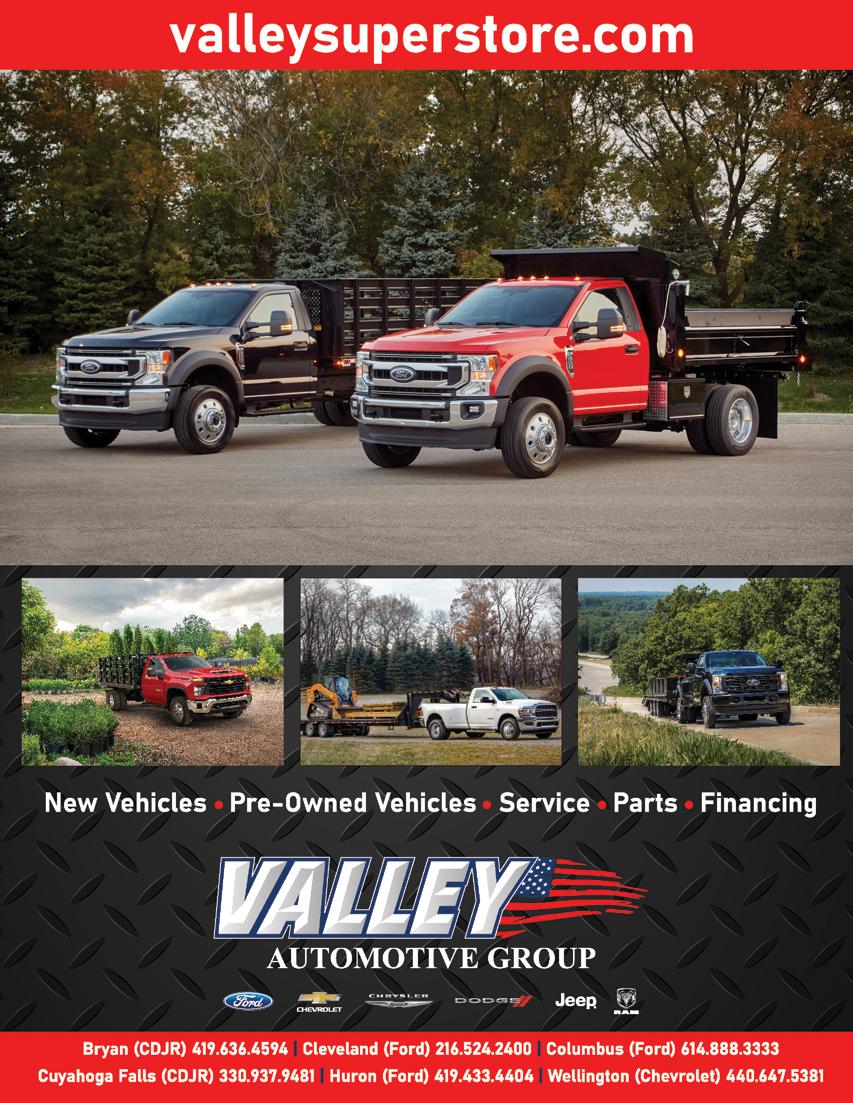
continued from page 32

Overtime is an additional labor challenge that can eat into your bottom line if it is unplanned. You also want to be careful your usage of overtime doesn’t incentivize employees to work slower.
An overlooked area that can experience a number of efficiency boosts is your fleet and equipment. One common mistake is not prioritizing regular maintenance, leading to frequent breakdowns and downtime for your team.
It’s also a good idea to organize your crews’ tools clearly so they don’t have to hunt for their equipment during the morning rollout. One option is to keep each crew’s necessary tools on their assigned trailer at the end of the day.
Another unseen cost is underutilized equipment. Don’t fall for the trap of buying a machine with all of its bells and whistles if it’s something that only gets used one month out of the season. In these situations, it’s better to rent a specific machine until there is enough work to support its purchase.
If you have fleet tracking technology, make sure you’re monitoring the idling of trucks and equipment. Running these unnecessarily results in wasted fuel and those costs can quickly add up. This software can also help you develop better routing so your team isn’t backtracking constantly and burning more gas than needed.
When you’re looking for ways to save on costs, material waste may not be top of mind. However, over-ordering or improperly storing products just for them to spoil is a miscalculation you can’t afford to make on a regular basis.
While early ordering can result in savings, if you have a large amount of churn with your customer base, you may end up with more material than you planned for.
Another way your materials can be wasted is if you are not training your team to calibrate and apply products at the proper rate. If they are applying it at an inefficient amount, you’ll be stuck with numerous callbacks and applying too much can burn a lawn and result in angry customer calls.
In the cases of a client changing their mind on plant material you’ve already ordered, rather than eating the cost, try to find a new purpose for them, like upselling to another client on some small enhancement work. Recycling green waste on your property can also reduce your dumping fees and provide your team with a source of compost for future jobs.
With so many moving parts in your landscape business, you may find yourself neglecting your administrative processes as long as they get the job done. Yet redundant or outdated processes could be costing you with tasks taking longer than they should or slowing down the rest of your team.
Dig into whether there is wasted time or tasks that can be digitized. Not only can this help you become more efficient, but it can also help you get a better picture of where your finances stand.
It’s also possible you have redundant technology solutions you are subscribed to, or even worse, technology you’re not taking advantage of at all. Avoid buying software solutions and then fail to implement them properly. If your team is not using a certain platform, determine if it’s a general resistance to change or if the product isn’t a good fit for your operations.
Technology can be greatly beneficial to your overall efficiency, but only if it’s being integrated. Take the time to regularly evaluate and consolidate your technology tools so you’re not paying for multiple services that do the same thing.
This article was published by Jill Odem, senior content manager for the National Association of Landscape Professionals (NALP). Stay up to date on the latest trends and strategies for Landscape and lawn care businesses and get the latest news weekly in your inbox at https://blog.landscapeprofessionals.org.
• Screened Topsoil (Stored in a hoop house on site.)
• Granite & Sandstone Boulders From 8” to 12’+ priced per ton and per piece on request. 1’-2’ granite and 2’-3’ granite available, presorted, for immediate pick up.
• Mixed Boulders (Available for immediate pick up.)
• Washed Gravel, Concrete & Mason Sand.
• Crushed Gravel & Limestone products available.
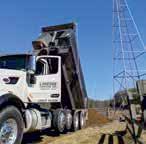
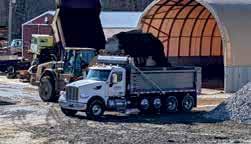
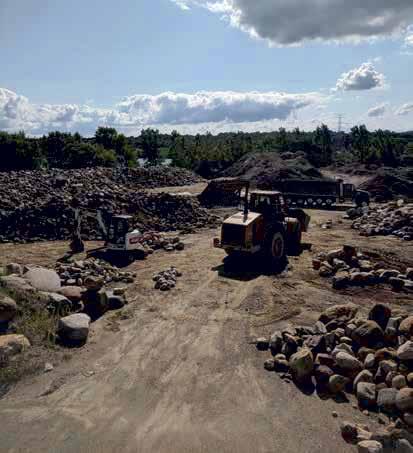

• Prioritize workplace flexibility. Workers prefer jobs that provide more flexibility over those that offer more vacation days. To the extent possible, give workers a say in their schedule, work conditions, work organization, work location, and work tasks.
• Match tasks to abilities. Use self-paced work, selfdirected rest breaks, and less repetitive tasks.
• Avoid prolonged, sedentary work. Prolonged, sedentary work is bad for workers at every age. Consider sit/stand workstations and walking workstations for workers who traditionally sit all day. Provide onsite physical activity opportunities or connections to low-cost community based options.
• Manage hazards. Including noise, slip/trip hazards, and physical hazards – conditions that can challenge an aging workforce more.
• Provide and design ergo-friendly work environments. Workstations, tools, floor surfaces, adjustable seating, better illumination where needed, and screens and surfaces with less glare.
• Utilize teams and teamwork strategies for agingassociated problem solving. Workers closest to the problem are often best equipped to find the fix.
• Provide health promotion and lifestyle interventions including physical activity, healthy meal options, tobacco cessation assistance, risk factor reduction and screenings, coaching, and onsite medical care. Accommodate medical self-care in the workplace and time away for health visits.
• Invest in training and building worker skills and competencies at all age levels. Help older employees adapt to new technologies, often a concern for employers and older workers.
• Proactively manage reasonable accommodations and the return-to-work process after illness or injury absences.
• Require aging workforce management skills training for supervisors. Include a focus on the most effective ways to manage a multi-generational workplace.
This article first appeared on the The National Institute for Occupational Safety and Health’s (NIOSH) website, located at www.cdc.gov/niosh. NIOSH’s mission is to develop new knowledge in the field of occupational safety and health and to transfer that knowledge into practice. Their vision: Safer, Healthier Workers.
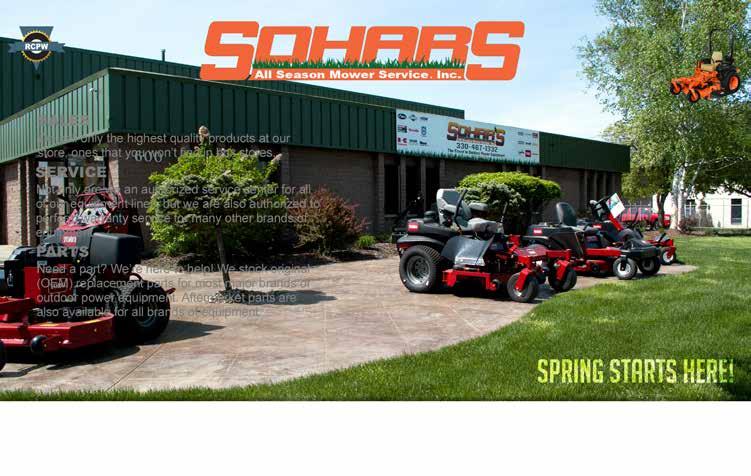



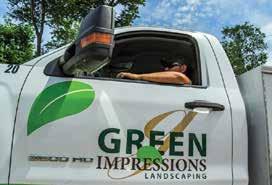
EVENT INFORMATION
DATE & LOCATION
SEPTEMBER 19, 2024
GREEN IMPRESSIONS
842 ABBE RD N, SHEFFIELD, OH 44054
AGENDA REGISTRATION
5:00PM to 5:30PM
FACILITY TOUR
5:30PM to 8:30PM
NETWORKING/FOOD SERVED
8:30PM to 9:00PM
COST TO ATTEND MEMBERS: NO CHARGE NON MEMBERS: $50
REGISTER TO ATTEND BY SEPTEMBER 12, 2024
SPONSORED BY EMERALD SPONSOR

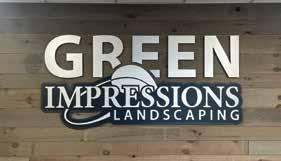
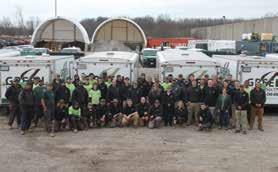
With over 25 years of experience in the field, Joe Schill, Founder and President of Green Impressions, LLC, is truly passionate about landscaping, his clients, his employees, and doing the job right.
In 1993, Joe, along with his brother, founded Schill Landscaping right out of college. The company was successful for many years, but in 2011, it split into commercial and residential sectors, leading to the formation of Green Impressions. Initially focused on residential landscaping, Green Impressions later expanded to become a full-service landscape design, build, and maintenance business. Joe and his partner, Jim Louth, share a strong passion for the industry.
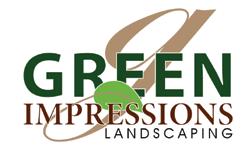
Innovation is at the heart of our designs.
Since its establishment, Green Impressions’ mission has been to create optimal outdoor living spaces designed for connecting the home and outdoors with family, friends, and neighbors. Joe and his team invite prospective clients to transform their properties into private sanctuaries.
Green Impressions now boasts over 85 employees who make up their dedicated team, striving to make customers happy with quality work. Joe believes in two key principles for client relationships: “Do what we say we are going to do” and “Treat clients like you would treat your mother.” Our goal is to hire competitive employees with a team focus and high accountability. We keep statistics like a sports team to drive both personal and business growth through frequent feedback and coaching.
They take tremendous pride in their workmanship, reliability, and communication. Green Impressions is proud to be among the best in the landscaping services industry, displaying incredible attention to detail and working diligently to win clients’ approval.
Join us on September 19, 2024, as the team at Green Impressions gives us a peek into what has made them so successful over the years. Space is limited.
SPONSORSHIP OPPORTUNITIES FOR THIS YEAR’S MEETING SCHEDULE ARE NOW AVAILABLE. CALL 440.717.0002 FOR INFO.

HOSTED BY


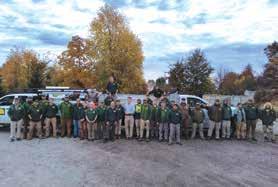
EVENT INFORMATION
DATE & LOCATION
OCTOBER 9, 2024
GREENLAWN SPECIALISTS
774 PEACHBLOW RD, LEWIS CENTER, OH 43035
AGENDA REGISTRATION
6:00PM to 6:30PM
WELCOME & FACILITIES DISCUSSION
6:30PM to 6:50PM
FACILITIES OPEN HOUSE
6:50PM to 7:15PM
NETWORKING/FOOD SERVED
7:15PM to 8:15PM
COST TO ATTEND MEMBERS: NO CHARGE NON MEMBERS: $50
REGISTER TO ATTEND BY OCTOBER 2, 2024
SPONSORED BY EMERALD SPONSOR

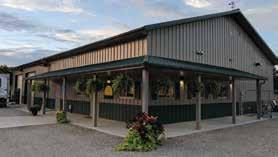
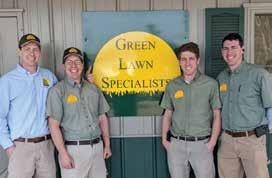
GreenLawn Specilists is a local family team specializing in landscape maintenance.
The Germann brothers have been maintaining lawns and landscapes together since the late ’90s. They handle all aspects of maintenance including mowing, lawn applications, irrigation systems, backflow testing, landscape lighting, spring and fall cleanups, mulch, and more.
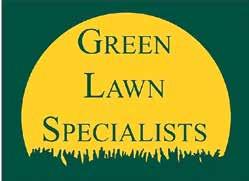
As brothers, Kyle, Philip, Scott, and Chris take a very hands-on approach to each of their areas of expertice and place a high value on continuing education, giving them the ability to keep their clients’ properties both functional and beautiful.
GreenLawn Specialists is unique in its focus on the maintenance of smaller residential properties. Great software gives them the ability to cater to clients with a smaller total spend, and aggregate more of them to create the needed revenue picture. Their single location - with about 40 peak employees - services about 3,000 total clients from a 5-acre parcel purchased in 2017. This has placed their focus on improving operational efficiency rather than growing, as they have no plans for a second branch/location.
Note: In lieu of our typical Central Ohio Facility Tour, the Germann brothers have generously offered to host an Open House Networking Event for us in 2024. We will begin with a brief discussion about the history and focus of their company, followed by a quick tour of the facility. We will then conviene into networking time.
Join us, October 9th, 2024 at GreenLawn Specialists. Space is limited.
SPONSORSHIP OPPORTUNITIES FOR THIS YEAR’S MEETING SCHEDULE ARE NOW AVAILABLE. CALL 440.717.0002 FOR INFO.


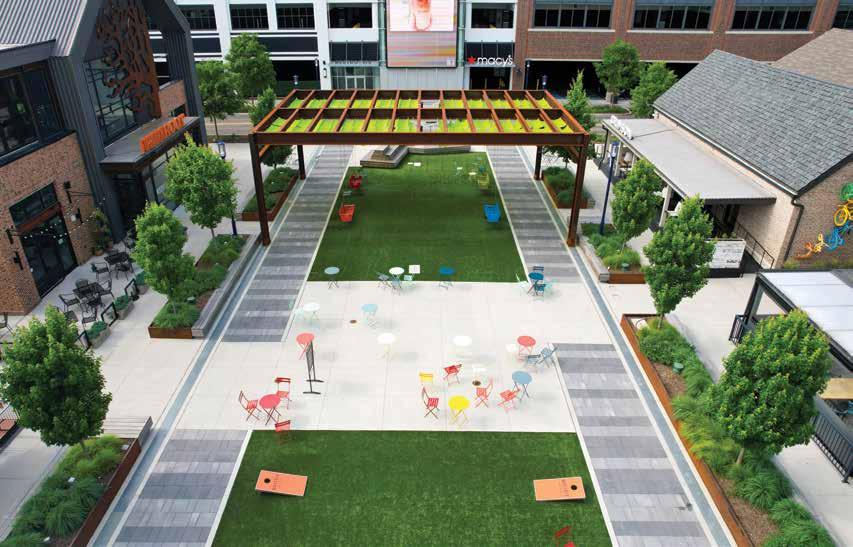
In the hustle and bustle of urban life, it’s easy to overlook the importance of nature. Concrete jungles, while full of energy and life, can often lead to a disconnect from the natural world. Urban landscaping presents a vital remedy to this issue.
Incorporating greenery into our cities reaps many environmental, social, and economic benefits, making our urban landscapes more visually appealing and nurturing to the spirit.
Urban green spaces are essential for fostering a sense of community and improving the overall quality of life.
With buildings dominating the skyline, adding intentional greenery can soften hardscapes and create a more inviting atmosphere. Green roofs and vertical gardens are excellent examples of utilizing often-overlooked areas to introduce nature into urban settings.
Pocket parks, strategically placed throughout cities, offer a much-needed respite in the concrete jungle. They allow residents to enjoy nature without traveling far from home.
One of the most significant advantages of urban green spaces is their positive impact on the environment.
Green roofs, green walls, and vertical gardens play a crucial role in combating urban heat islands by providing natural insulation and cooling effects. These green solutions can reduce energy consumption for heating and cooling buildings, ultimately lowering greenhouse gas emissions.
continued on page 40
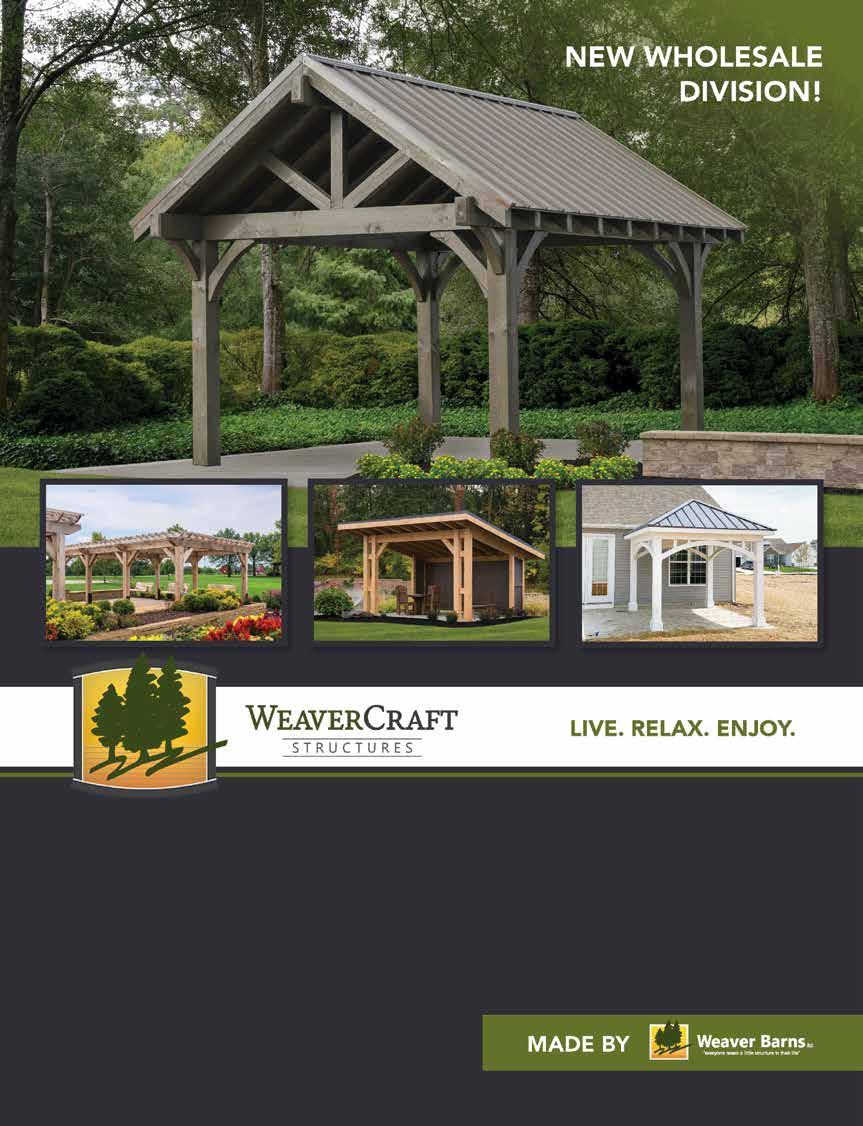



continued from page 38
Additionally, urban green spaces help improve air quality by filtering pollutants and absorbing carbon dioxide. They also effectively manage stormwater, reducing runoff and the risk of flooding in cities. Plants and vegetation present in parks and green roofs absorb rainwater, which can alleviate stress on urban drainage systems and contribute to healthier ecosystems.
Beyond environmental considerations, urban landscaping fosters a sense of community.
Green spaces serve as gathering areas, encouraging social interactions where neighbors can connect, children can play, and families can spend quality time together. These parks and gardens become the heart of neighborhoods, enhancing community spirit and belonging.
Researchers have found that access to green spaces is linked to improved mental health. Nature has a calming effect, reducing stress and anxiety levels.
Urban landscaping has the potential to create peaceful retreats where residents can escape from the chaos of city life, promoting mental well-being.
Also, well-designed landscapes can help to encourage physical activity, inviting people to walk, jog, or cycle—contributing to healthier lifestyles.
Investing in urban green spaces has proven to yield significant economic returns. Properties near parks and green roofs generally have higher property values, as increased accessibility to green spaces is an attractive feature for potential buyers and renters.
Also, if cities prioritize green infrastructure, they can save on public spending to fix environmental issues.
Effective stormwater management through green roofs and parks can reduce stormwater runoff and lower municipal water treatment expenses. Plus, urban green areas can stimulate local economies by attracting businesses and tourism, particularly in well-maintained parks that host events or festivals.
Urban areas often struggle with a lack of visual appeal, which can lead to feelings of alienation among residents.
Using green roofs and vertical gardens does more than just improve the scenery, they also offer homes to a variety of different species. This increases a city’s overall appeal, making it more welcoming and pleasant for both locals and visitors.
Urban planners can create unique, colorful environments by transforming drab buildings into green towers and utilizing wall space for vertical gardens. As you walk through neighborhoods adorned with greenery, notice how these features make the cityscape feel more engaging, lively, and connected to nature.
It might come as a surprise, but the presence of greenery can also decrease crime rates. Studies have shown that neighborhoods with more green spaces tend to experience lower crime levels.
Properly maintained parks promote social interaction within the community, build social unity, and inspire residents to appreciate and care for their surroundings. This sense of ownership often leads to increased vigilance and care for the area, deterring criminal activity.
Investing in urban landscaping further contributes to safety, reinforcing the idea that green spaces can be both beautiful and secure.
As cities continue to grow and evolve, innovative landscaping solutions are emerging to address the challenges of urbanization. Concepts such as vertical gardens, green roofs, and community gardens are gaining traction in densely populated areas. These designs not only maximize limited space but also promote sustainability by improving insulation and reducing energy costs.
This article was written by Daniel Sponzilli for the Sponzilli Landscape Group blog, located at www.sponzilli.com. Sponzilli Landscape Group is an awardwinning landscape design, construction & lighting company serving discerning homeowners, architects, landscape architects, general contractors, and leading property managers throughout New Jersey and New York City.
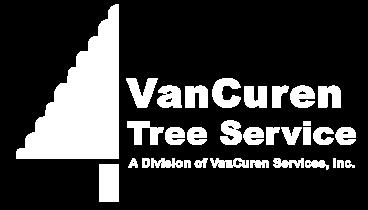
Since 1986, VanCuren Tree Services has been Northeast Ohio’s complete tree care specialist. We provide comprehensive services for any residential, commercial, or utility tree care need.
The tree professionals at VanCuren Tree Services have helped home and business owners throughout Greater Cleveland and Northeast Ohio maintain the beauty, vitality, and safety of their trees.
We are proud to offer a full range of tree care services, from tree and stump removal to storm damage clean up to utility work and beyond.
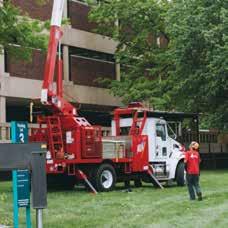
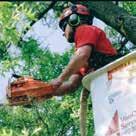
To find out more about what VanCuren has to offer, visit our website at www.vancurentreecare.com, or call us at 440.338.5005 today for a free consultation.
• Complete Tree Maintenance Programs
• Certified Arborists on Staff
• Tree Removal
• Tree Trimming
• Land Clearing
• 178’ 50 Ton Crane
SALES REPRESENTATIVES:
Michael Sowul, Certified Arborist
James DiRosa, Certified Arborist
David R. Van Curen
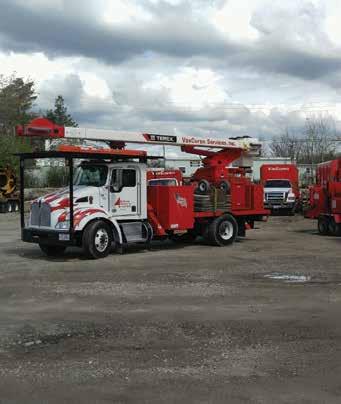
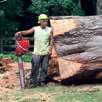

• 75’ Bucket Trucks
• Deep Root Fertilization
• 24-Hour Emergency Service
• Stump Grinding
• Tree Moving
PHONE: 440.338.5005
FAX: 440.564.9319

SANDY MUNLEY Executive Director / OLA
Over the years, I have heard so many of our members say things like, “I am only a landscaper,” or “I just work outside all day and get dirty,”and other self-deprecating comments. If we are not proud of what we do, how can we expect others not in the industry to give you the respect you so much deserve! How can we attract youth to the industry?
The Green Industry has an amazing and often underappreciated impact on everyone’s daily lives. Every time we enjoy a lush garden, a well-maintained park, a beautifully landscaped business, or even look out the window, we’re witnessing the results of the hard work and dedication of professionals in this field.
Your efforts not only enhance the aesthetic appeal of our environments but also contribute to the well-being of communities by providing green spaces that promote relaxation, social interaction, and environmental sustainability. You increase property values. You help businesses attract clients. You help cities attract businesses and residents. You provide homeowner’s a sanctuary in their own backyard. And, the list goes on and on!
When you look at a brochure for a community or a college, what do they feature? The beautifully landscaped campuses!
That plant material was grown by talented and knowledgeable nursery staff and the landscape was designed and installed by equally as talented and knowledgeable landscape contractors. You are all professionals that should be very proud of the impact you have on the world around us!
It’s incredible how your work supports both the functionality and beauty of the spaces we inhabit, making you all true rock stars in building stronger, healthier communities!
At OLA, we want to shout this from the rooftops! We want to be sure that young people know the green industry has a lot of opportunity and offers many different career paths. To ensure we are able to help student and schools, OLA is in the process of establishing a foundation. It is our goal to be able to offer more scholarships and work with schools to make their programs stronger and more attractive to students.
In the coming months, we will keep you updated on the status of building the foundation. It is a process and it takes time to set up a new organization with 501(c)(3) status that will run separate from the association, but will operate hand in hand with OLA. Great things are happening! – Stay tuned!


The Ohio Landscape Association is delighted to welcome the following new members to our association:
REGULAR MEMBERS
Accuscape Landscaping 2601 Hamilton Cleves Rd Fairfield Twp, Ohio 45013 (513) 600-6829
Chastity Loman
Precise Lawn Care 348 Pineview Cir Berea, OH 44017 (216) 245-2110
Michael McNeal
ASSOCIATE MEMBER
Seasonal Workforce Strategies LLC PO Box 198 Charlottesville, VA 22902 (434) 231-5995
Luke Hettinger

